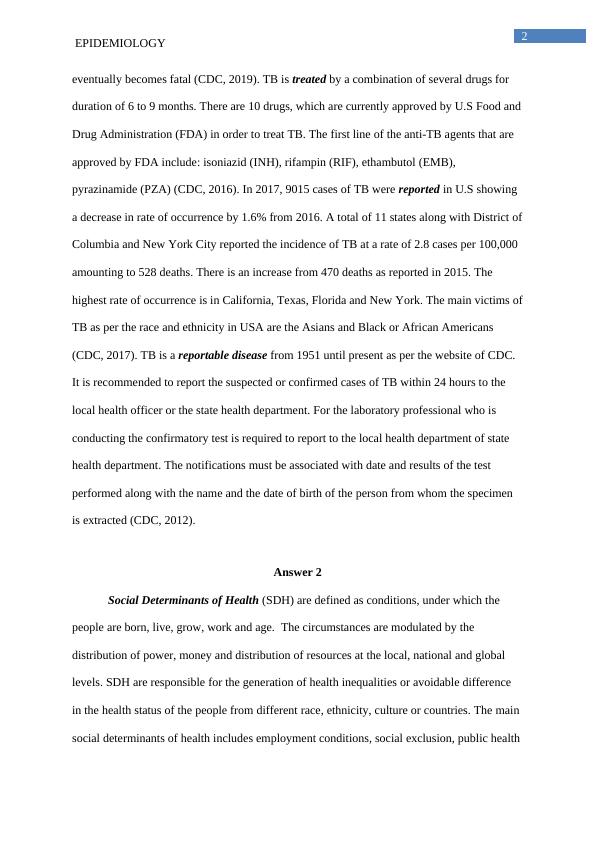Epidemiology of Tuberculosis: Outbreak, Treatment, and Prognosis
Write a paper applying epidemiology and nursing research to a communicable disease, including its description, causes, symptoms, transmission, complications, treatment, and demographic impact.
11 Pages3140 Words478 Views
Added on 2023-04-21
About This Document
This paper provides a detailed perspective on the outbreak, treatment, and prognosis of tuberculosis (TB) in the U.S and worldwide. It discusses the mode of transmission, symptoms, complications, and treatment options for TB. It also highlights the social determinants of health that contribute to the development of TB. The role of community health nurses in TB prevention and control is discussed, along with the initiatives taken by CDC and other organizations to eliminate TB globally. The global impact of TB and the situation in countries like India and UK are also mentioned.
Epidemiology of Tuberculosis: Outbreak, Treatment, and Prognosis
Write a paper applying epidemiology and nursing research to a communicable disease, including its description, causes, symptoms, transmission, complications, treatment, and demographic impact.
Added on 2023-04-21
ShareRelated Documents
End of preview
Want to access all the pages? Upload your documents or become a member.
Overview Of The Incidence Tuberculosis in India
|16
|1893
|21
Epidemiology Assignment on Tuberculosis
|16
|4620
|210
Tuberculosis: Causes, Transmission, and Impact on Society
|14
|4447
|22
Author Note: Nurses Epidemiology in the Presence of Outbreaks
|6
|934
|424
Epidemiology of Tuberculosis among individual more than 18 years in African Countries between 2005-2015
|15
|3052
|211
Tuberculosis in India: Report
|14
|3814
|60




